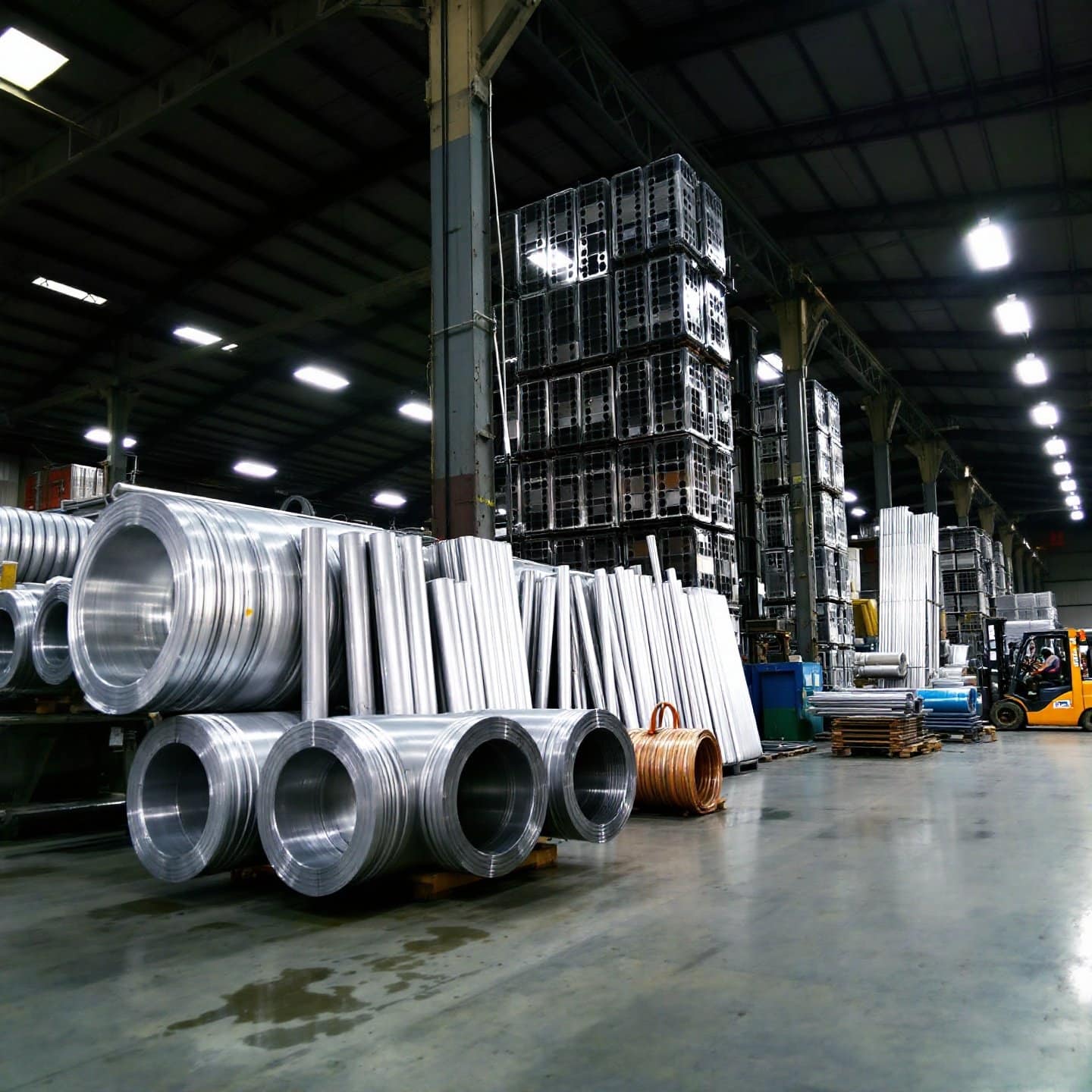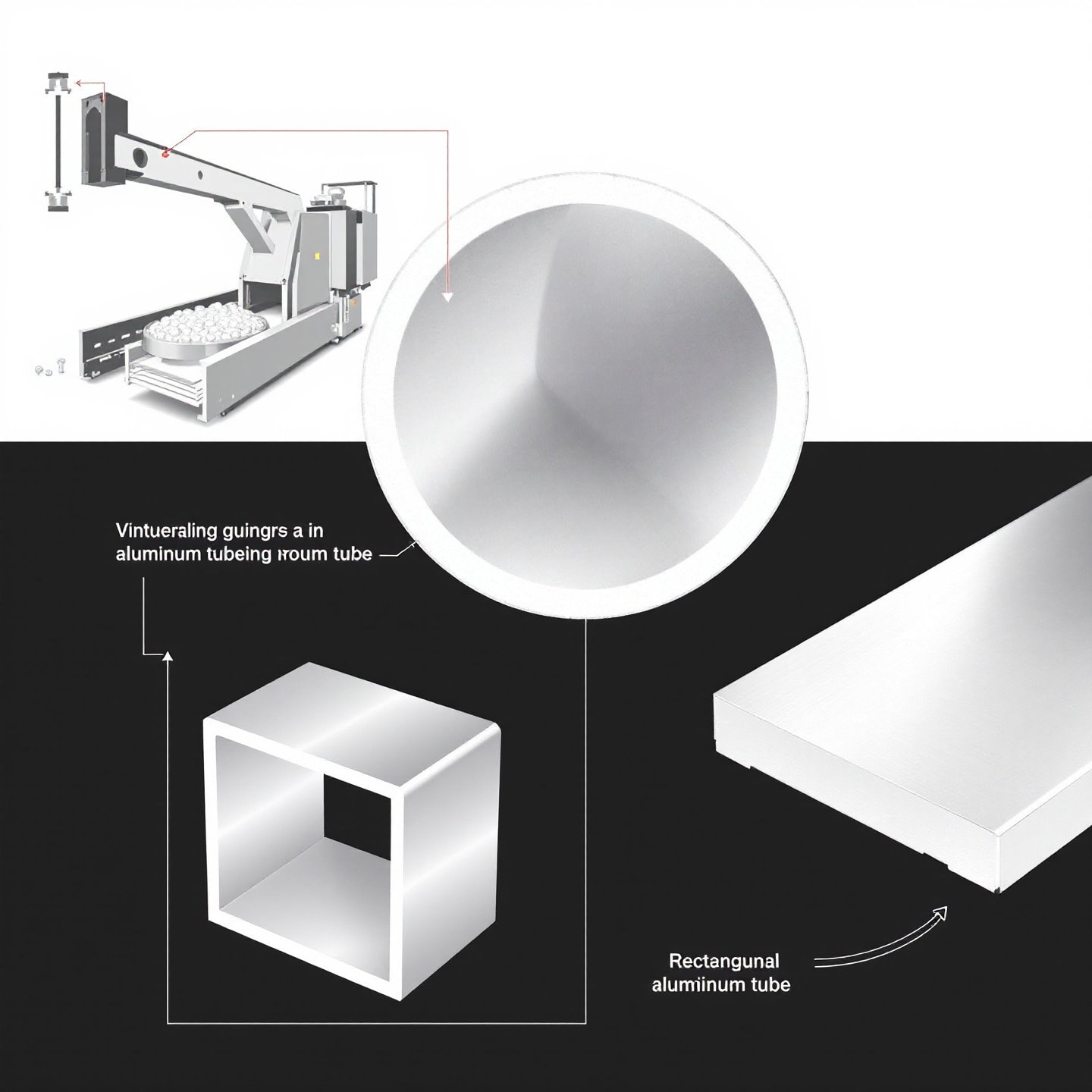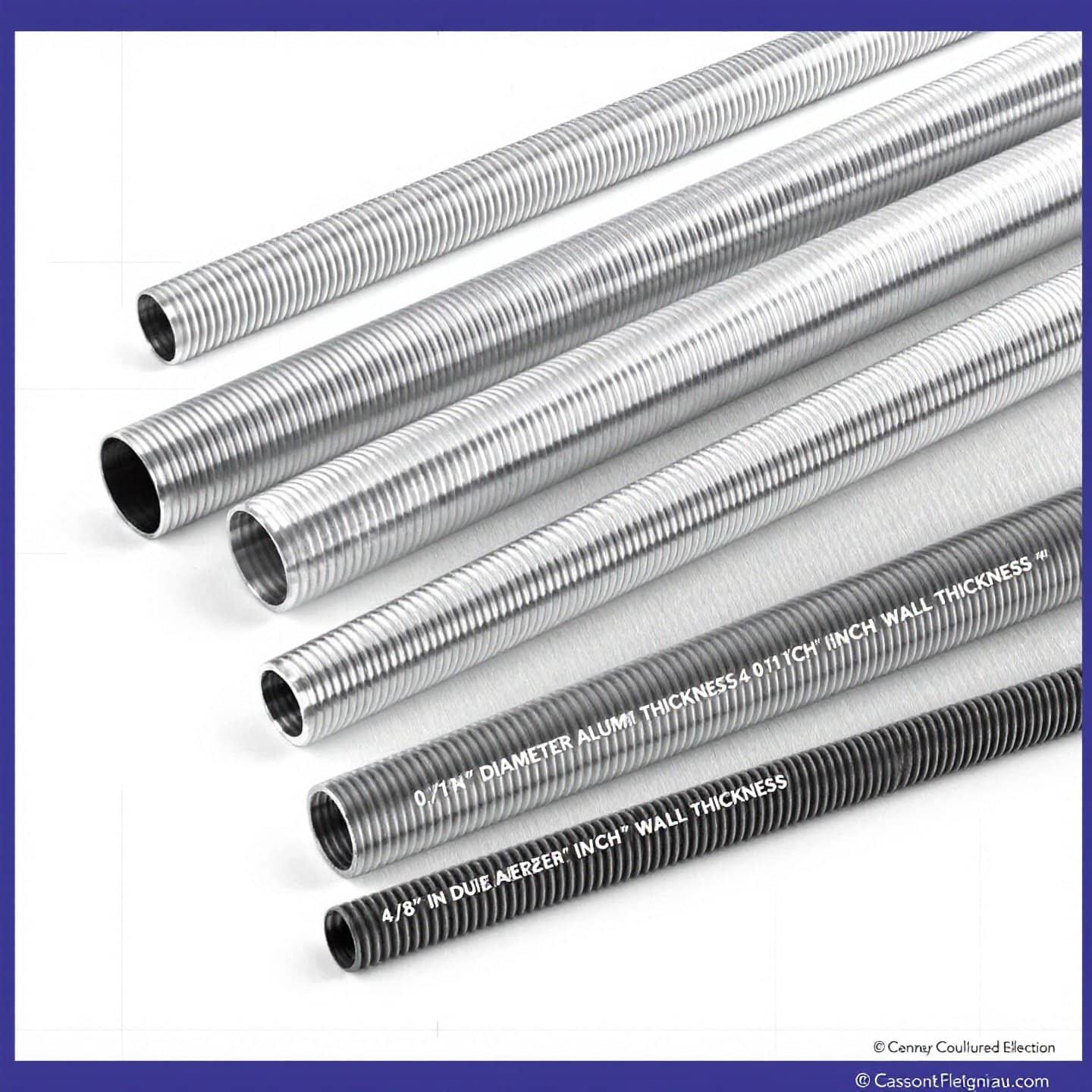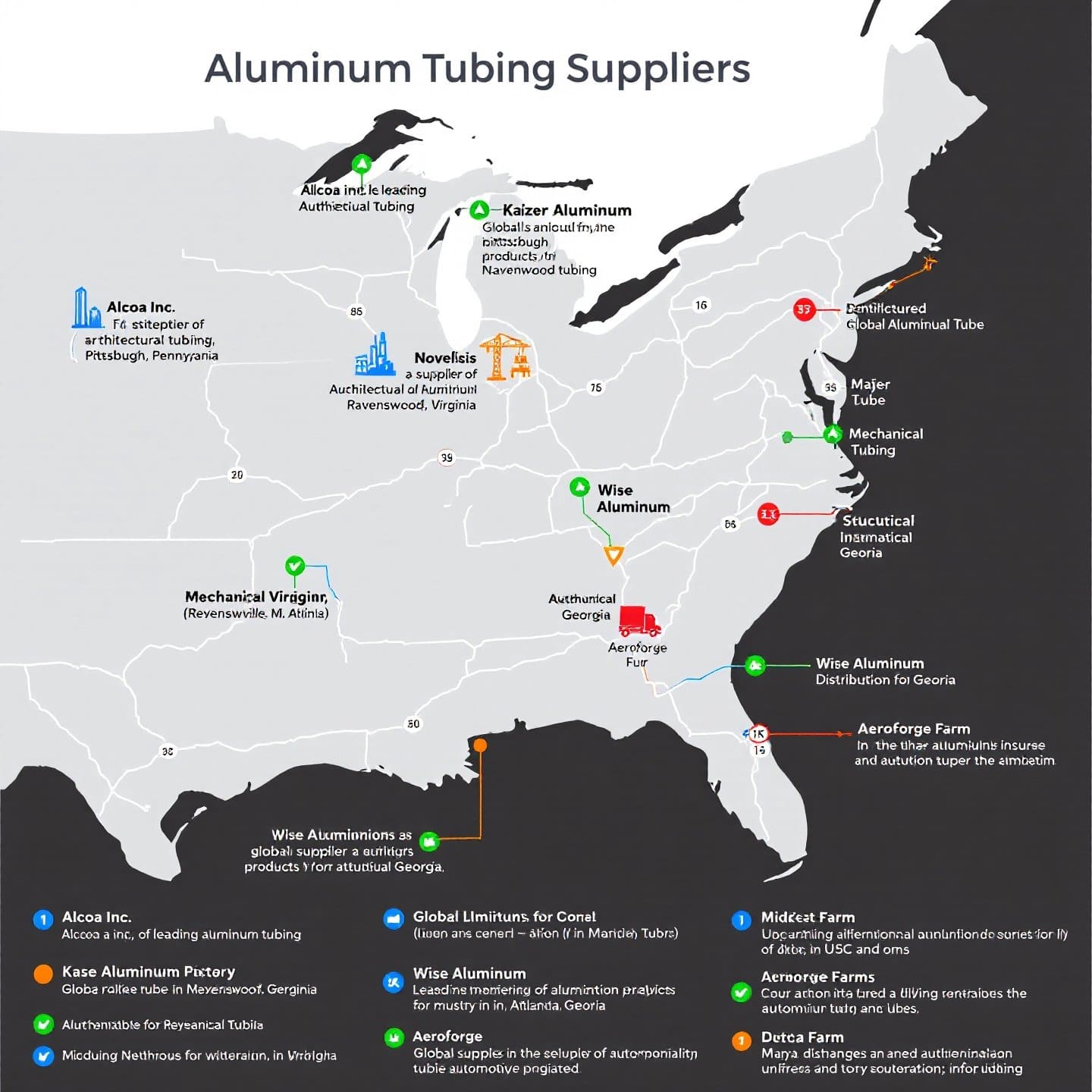Ultimate Aluminum Tubing Guide: Applications, Specs, and Sourcing Tips
Nov 26, 2024
Aluminum tubing is a versatile and widely used material in various industries due to its unique combination of properties. Defined simply, aluminum tubing is a hollow cylindrical form made from aluminum, known for its exceptional strength-to-weight ratio, corrosion resistance, and flexibility in manufacturing. These characteristics make aluminum tubing a preferred choice over traditional materials like steel and copper in many applications.
Aluminum tubing stands out primarily due to its lightweight nature. This quality reduces the overall weight of structures and components, making it ideal for industries where weight is a critical factor, such as aerospace and automotive. Additionally, aluminum's corrosion resistance is a significant advantage, particularly in environments prone to moisture and chemical exposure. This resistance is due to the natural formation of a protective oxide layer on its surface, which prevents further oxidation.
Moreover, aluminum tubing exhibits excellent strength. Despite its lightweight, it can withstand significant stress and pressure, making it suitable for structural applications. According to data from TubeWeb , alloys like 6061 and 7075 are particularly noted for their high tensile strengths, making them popular choices in demanding applications.
When compared to steel, aluminum tubing offers a lighter alternative without sacrificing strength. This is crucial in applications where reducing weight can lead to improved efficiency and performance, such as in transportation and mobile equipment. Additionally, aluminum's ability to resist corrosion without the need for additional coatings or treatments provides a cost-effective and low-maintenance solution.
In contrast to copper, aluminum tubing is more cost-effective and offers better thermal conductivity, which is beneficial in applications like heat exchangers. While copper is known for its excellent electrical conductivity, aluminum provides a more economical option for both heat and electrical applications when weight and cost are considerations.
In conclusion, the combination of lightweight, strength, and corrosion resistance makes aluminum tubing a superior choice in many scenarios. Its adaptability and performance characteristics ensure it remains a staple material across various industries, from construction to electronics.
Aluminum tubes come in a variety of shapes, each tailored to specific applications and structural needs. The most common forms include round, square, and rectangular tubes. Understanding these variations is crucial for selecting the right type of aluminum tube for a given project, as each has distinct characteristics and uses.
Round aluminum tubes are perhaps the most versatile and widely used. Their circular shape allows for even distribution of stress and pressure, making them ideal for applications that require structural integrity, such as in the construction of frames and supports. Their aerodynamic shape also makes them suitable for use in transportation industries, where reducing drag is essential. According to IQS Directory , round tubes are often extruded to precise specifications, ensuring consistency in performance.
Square and rectangular aluminum tubes are known for their strength and rigidity, which make them perfect for structural applications where stability is a priority. These tubes are commonly used in frameworks, railings, and as support beams in construction. The flat surfaces of square and rectangular tubes facilitate easy joining and assembly, which is advantageous in modular construction projects.
Additionally, the geometric shape of these tubes allows for efficient space utilization, making them a preferred choice in applications where space is limited or where a flush surface is required for mounting or attachment.
While the terms "aluminum tubing" and "aluminum pipe" are often used interchangeably, they differ significantly in terms of design and application. Aluminum pipes are typically used for conveying fluids and gases and are measured by their internal diameter. In contrast, aluminum tubes are measured by their external diameter and are primarily used in structural applications where strength and rigidity are critical. This distinction is essential for ensuring the right product is chosen for the intended use.
The wall thickness of tubes can vary significantly, allowing for customization based on the specific stresses and loads they will encounter. This variability is less common in pipes, which usually have standardized wall thicknesses to maintain consistent flow rates. Thus, selecting between tubing and piping depends largely on the application requirements, whether it's for structural integrity or fluid transport.
Understanding these differences and the specific advantages of each type of aluminum tube is crucial for making informed decisions in both design and application. As we explore further, these insights will guide the selection process for various industrial needs.

Aluminum tube stock refers to pre-manufactured lengths of aluminum tubing that are ready for use in various applications. This stock is available in a wide range of sizes and lengths, catering to diverse industrial needs. Understanding the availability and specifications of aluminum tube stock is essential for making informed purchasing decisions.
The market offers a broad selection of aluminum tube stock, with sizes ranging from small diameters suitable for precision applications to larger tubes used in structural projects. Commonly, aluminum tube stock is available in diameters from 1/4 inch to 12 inches, with wall thicknesses varying to meet specific strength and weight requirements. For instance, 6061 aluminum round tubes, a popular choice for its strength and corrosion resistance, can be found in standard lengths of 2, 4, 6, 8, 12, and 24 feet, or can be custom cut to specific lengths ( MetalsDepot ).
These tubes are typically produced in either extruded or drawn forms, each offering distinct advantages. Extruded tubes are cost-effective and suitable for general-purpose applications, while drawn tubes provide higher precision and are ideal for critical applications requiring exact dimensions.
Selecting the appropriate aluminum tube stock involves considering the specific requirements of your project. Standard sizes are often sufficient for common applications, providing a balance between availability and cost-effectiveness. However, for projects with unique specifications, opting for custom sizes may be necessary, although this can impact both cost and lead time.
When choosing aluminum tube stock, it's crucial to consider the mechanical properties required, such as tensile strength and corrosion resistance, which vary depending on the alloy and temper of the tube. Additionally, the choice between standard and custom lengths can influence the efficiency of material usage and the overall cost of the project.
In conclusion, understanding the nuances of aluminum tube stock availability and sizing is vital for ensuring that the selected tubes meet the demands of your application. By carefully evaluating these factors, you can optimize both performance and cost-effectiveness, paving the way for successful project outcomes.
When it comes to purchasing aluminum tubing, finding a reliable supplier is crucial for ensuring quality and compliance with industry standards. Fortunately, there are numerous options available both online and locally, catering to diverse needs and specifications.
Online platforms offer a convenient way to explore a wide range of aluminum tubing options. Websites like Metals Depot and TW Metals provide extensive catalogs of aluminum tubing for sale, including various grades and sizes. These suppliers typically offer detailed product descriptions, specifications, and pricing, making it easier to compare options and make informed decisions.
One of the key advantages of buying aluminum tubing online is the ability to access a broader selection than what might be available locally. Additionally, many online suppliers offer custom cutting services, allowing you to order tubing in specific lengths to match your project requirements.
For those who prefer to buy aluminum tubing in person, local metal supply stores can be a great resource. Visiting a local supplier allows you to physically inspect the tubing and discuss your needs directly with knowledgeable staff. This can be particularly beneficial if you have specific requirements or need advice on the best type of tubing for your application.
When choosing a local supplier, it's important to consider factors such as their inventory range, pricing, and customer service. Establishing a relationship with a local supplier can also lead to better pricing and availability, especially for bulk purchases.
By considering these factors, you can confidently find and buy aluminum tubing that meets your project's specifications and quality standards. As we continue, we will explore the key considerations to keep in mind when purchasing aluminum tubing to ensure optimal performance and value. For a detailed guide on finding the best purchasing options, check out our article on how to buy aluminum tubing effectively.
Purchasing aluminum tubing involves several critical considerations to ensure you select the right product for your specific needs. From alloy type and temper to dimensions and finish, each factor plays a crucial role in the performance and suitability of the tubing for various applications.
The choice of alloy is fundamental when selecting aluminum tubing. Different alloys offer varying degrees of strength, corrosion resistance, and formability. For instance, 6061 alloy is renowned for its excellent mechanical properties and is widely used in structural applications. On the other hand, 6063 alloy is favored for its superior surface finish and is often used in architectural applications. Understanding the specific requirements of your project will guide you in choosing the appropriate alloy.
Temper, which refers to the hardness and strength of the aluminum, is another critical factor. It affects the tubing's ability to withstand stress and its ease of machining or forming. Common temper designations include T6, which indicates a solution heat-treated and artificially aged alloy, providing high strength and good machinability.
Dimensions such as diameter and wall thickness significantly impact the tubing's performance. A larger diameter and thicker wall provide increased strength and load-bearing capacity, essential for heavy-duty applications. Conversely, applications requiring flexibility and reduced weight may benefit from thinner walls. It's important to balance these factors based on the specific demands of your application.
Standard aluminum tubing sizes are readily available from suppliers, but custom dimensions can be ordered if your project requires specific measurements. However, custom orders may involve higher costs and longer lead times.
The finish of aluminum tubing can affect both its aesthetic appeal and functional performance. Anodized finishes, for example, enhance corrosion resistance and provide a decorative appearance, making them suitable for visible applications. Powder coating is another option that offers a durable, protective layer in various colors.
Surface treatments can also improve the tubing's resistance to wear and environmental factors, which is particularly important in harsh or demanding environments.
Verifying material certifications is essential to ensure the quality and compliance of the aluminum tubing. Certifications provide assurance that the tubing meets the specified standards and performance criteria. Reputable aluminum tubing suppliers should be able to provide documentation that verifies the composition and properties of the tubing, ensuring it is suitable for your intended application.
In conclusion, carefully considering these factors when purchasing aluminum tubing will help you select the right product that meets your performance, budget, and timeline requirements. By understanding the nuances of alloy selection, temper, dimensions, and finish, you can optimize the use of aluminum tubing across various applications, ensuring successful project outcomes.

While the terms "aluminum pipe" and "aluminum tubing" are often used interchangeably, they represent distinct products with unique characteristics and applications. Understanding these differences is crucial for selecting the right material for your project needs.
Aluminum pipes are generally designed for the transportation of fluids and gases. They are typically round and are measured by their internal diameter, which is critical for calculating flow rates. Pipes usually have standardized wall thicknesses to ensure consistent fluid dynamics, making them ideal for plumbing, HVAC systems, and chemical processing plants.
In contrast, aluminum tubes are measured by their external diameter and are available in a variety of shapes, including round, square, and rectangular. Tubes are often used in structural applications where strength, rigidity, and aesthetic considerations are paramount. The wall thickness of tubes can vary significantly, allowing for customization based on the specific stresses and loads they will encounter. This flexibility makes them suitable for use in construction, automotive, and aerospace industries.
Aluminum pipes are particularly suited for applications that require the efficient transport of fluids or gases. For example, they are commonly used in water supply systems and gas pipelines, where maintaining a consistent flow is essential. The standardized dimensions and material certifications ensure reliability and safety in these applications.
On the other hand, aluminum tubing is favored in applications that prioritize structural support and visual appeal. For instance, they are used in the construction of bicycle frames, furniture, and even in architectural designs where the aesthetic integration is as important as the structural integrity. The ability to choose from various shapes and wall thicknesses allows for greater design flexibility, making aluminum tubes a versatile choice for engineers and designers.
In summary, the choice between aluminum pipes and tubes should be guided by the specific requirements of your project. Whether you need the flow efficiency of pipes or the structural versatility of tubes, understanding these distinctions will help you make informed decisions, ensuring optimal performance and cost-effectiveness in your applications.
When considering aluminum tube for sale, one of the critical decisions is whether to opt for standard sizes or custom-fabricated options. Each choice presents distinct advantages and potential drawbacks, which can significantly impact your project's efficiency, cost, and timeline.
Standard aluminum tubing is readily available from most suppliers, offering a convenient and cost-effective solution for many applications. The primary advantage is the reduced lead time, as these tubes are often in stock and ready for immediate shipment. This availability can be crucial for projects with tight deadlines, allowing for quick procurement and installation.
Additionally, standard tubing sizes are typically less expensive due to mass production efficiencies. This cost-effectiveness is particularly beneficial for large-scale projects where budget constraints are a consideration. However, the downside is the limited flexibility in terms of dimensions and specifications, which may not meet the unique requirements of specialized applications.
Custom-fabricated aluminum tubes offer the flexibility to tailor dimensions, alloys, and finishes to meet specific project needs. This customization is ideal for applications requiring precise specifications or unique design elements, such as bespoke architectural projects or specialized industrial components.
However, the benefits of customization come with certain challenges. Custom orders typically involve higher costs due to the specialized manufacturing processes and materials required. Additionally, lead times can be significantly longer compared to standard sizes, as custom fabrication involves additional design and production steps.
The decision between standard and custom aluminum tubing should consider both cost and time factors. While standard tubing offers a more economical and faster solution, custom options provide the precision and specificity that some projects demand. According to Aluminium Warehouse , understanding the trade-offs between cost savings and the need for customization is key to making an informed decision.
Ultimately, the choice between standard and custom aluminum tubes should align with the project's specific requirements, budget constraints, and timeline. By carefully evaluating these factors, you can ensure that your selection supports the successful completion of your project, whether it involves straightforward installations or complex, tailored applications.
When it comes to sourcing aluminum tubing, selecting a reputable supplier is crucial for ensuring quality, reliability, and compliance with industry standards. The following is a list of top aluminum tubing suppliers, each offering a range of products and services to meet diverse industrial needs.
Choosing the right supplier involves evaluating several key factors to ensure they meet your specific needs:
By considering these factors, you can select a supplier that not only provides high-quality aluminum tubing but also supports your project's success through reliable service and expertise. As you navigate the options available, remember to assess each supplier's offerings and capabilities to ensure they align with your specific requirements.
In addition to these suppliers, consider Suqian Sunmay Aluminium Company Limited, renowned for its high-quality aluminum profiles and extensive range of alloys. Their global reach and commitment to customer satisfaction make them a valuable partner for projects requiring precision and excellence.

Choosing the correct aluminum tubing size is crucial for ensuring optimal performance and suitability for your specific applications. The two primary dimensions to consider are diameter and wall thickness, both of which significantly influence the tubing's characteristics and functionality.
The diameter of aluminum tubing, often measured in inches or millimeters, is a key determinant of its capacity and structural integrity. A larger diameter can support greater loads and is suitable for applications requiring structural strength, such as in construction frameworks or heavy machinery. Conversely, smaller diameters are ideal for precision tasks or applications where space is constrained, such as in automotive components or electronic housings.
Wall thickness, the distance between the tube’s inner and outer walls, plays a pivotal role in the tubing's durability and weight. Thicker walls enhance strength and load-bearing capacity, making them suitable for high-stress environments, but they also add weight. Thinner walls, on the other hand, reduce weight but may compromise strength, making them better suited for lightweight applications where flexibility is important, such as in aerospace or portable products.
When selecting aluminum tubing sizes, consider the specific demands of your application. For instance, in applications like bicycle frames or furniture, where a balance between strength and weight is crucial, a moderate diameter with a medium wall thickness may be optimal. In contrast, industrial applications requiring high strength, such as scaffolding, might necessitate larger diameters and thicker walls to ensure safety and reliability.
It's also important to factor in the environment the tubing will be exposed to. For corrosive or high-moisture environments, selecting a size that allows for protective surface treatments without compromising the tubing's structural integrity is essential.
For projects that require precise specifications, custom-sized tubing may be necessary. While this option offers tailored solutions, it can increase costs and extend lead times. Therefore, evaluating whether standard sizes can meet your needs effectively is often a cost-efficient strategy.
Aluminum tubing's versatility is evident across numerous industries. In the automotive sector, precise tubing sizes are crucial for systems such as exhausts and fuel lines, where exact diameters ensure efficiency and safety. In construction, the right tubing size can significantly affect the stability and durability of structures.
Ultimately, selecting the correct aluminum tubing size involves a careful assessment of the application's requirements, environmental conditions, and the balance between strength and weight. By understanding these factors, you can make informed decisions that enhance the performance and longevity of your projects.
Aluminum tubing is a critical component in numerous industries, offering a combination of lightweight, durability, and corrosion resistance that makes it an ideal choice for a wide range of applications. From construction to aerospace, the versatility of aluminum tubing is evident in its ability to meet the demanding requirements of various sectors.
In the construction industry, aluminum tubing is favored for its strength and lightweight properties. It is commonly used in structural applications such as scaffolding, roofing, and window frames. The ability of aluminum tubing to withstand harsh environmental conditions without corroding makes it an excellent choice for outdoor structures. Additionally, its aesthetic appeal and ease of fabrication allow for creative architectural designs, enhancing both function and form.
The automotive industry benefits significantly from the use of aluminum tubing, particularly in applications where weight reduction is crucial for improving fuel efficiency and performance. Aluminum tubing is used in components such as exhaust systems, drive shafts, and fuel lines. Its high strength-to-weight ratio allows manufacturers to produce vehicles that are both lightweight and robust, contributing to better handling and lower emissions. Case studies have shown that replacing traditional steel components with aluminum can lead to a significant reduction in vehicle weight, enhancing overall efficiency and sustainability.
In the aerospace sector, the demand for materials that offer both strength and minimal weight is paramount. Aluminum tubing meets these requirements, making it a staple in aircraft design and manufacturing. It is used extensively in fuselage frames, wing structures, and hydraulic systems. The ability of aluminum to withstand high stress while remaining lightweight is crucial for maintaining the performance and safety of aircraft. Furthermore, the corrosion resistance of aluminum tubing ensures longevity and reliability in the demanding conditions of aerospace environments.
One notable example of aluminum tubing's application is in the development of high-performance bicycles. Manufacturers like Trek and Cannondale have utilized aluminum tubing to create lightweight yet durable frames, enhancing speed and agility. Similarly, in the renewable energy sector, aluminum tubing is used in solar panel frames and wind turbine components, where its resistance to corrosion and lightweight nature contribute to the efficiency and longevity of these systems.
In conclusion, the diverse applications of aluminum tubing across industries highlight its adaptability and essential role in modern engineering and design. Whether in construction, automotive, or aerospace, aluminum tubing provides solutions that meet the specific needs of each sector, demonstrating its unparalleled versatility and effectiveness. To learn how aluminum tubing sizes and customizations fit into specific projects, explore our article on aluminum tubing sizes and customization options.
Aluminum tubing has proven itself as an indispensable material across a multitude of industries, thanks to its unique blend of lightweight, strength, and corrosion resistance. Its applications span from the construction of resilient structures to the manufacturing of efficient automotive and aerospace components. This versatility not only highlights aluminum tubing's adaptability but also underscores its critical role in advancing modern engineering solutions.
When considering aluminum tubing for your projects, it's essential to evaluate your specific requirements carefully. Factors such as the intended application, environmental conditions, and desired properties like strength and flexibility should guide your selection process. Whether you need standard sizes for immediate use or custom-fabricated options for specialized applications, understanding these needs will ensure optimal performance and cost-effectiveness.
Moreover, quality assurance is paramount. Ensuring that the tubing meets industry standards and possesses the necessary certifications can significantly impact the success and safety of your projects. This is where selecting a reputable supplier becomes crucial.
Partnering with a trusted supplier like Suqian Sunmay Aluminium can provide significant advantages. Known for their expertise in crafting high-quality aluminum profiles and alloys, they offer a wide range of products tailored to meet diverse industrial demands. With a commitment to customer satisfaction and compliance with international standards, Suqian Sunmay Aluminium stands out as a reliable source for premium aluminum tubing solutions.
In conclusion, aluminum tubing's role in modern industries is both versatile and vital. By thoroughly assessing your needs and collaborating with reputable suppliers, you can harness the full potential of aluminum tubing, ensuring your projects are efficient, durable, and innovative. For those seeking excellence in aluminum solutions, consulting with experienced suppliers like Suqian Sunmay Aluminium is a step towards achieving superior project outcomes.
While aluminum tubing is lighter than steel, it offers a high strength-to-weight ratio. Alloys like 6061 provide excellent tensile strength, making it suitable for many structural applications.
Yes, you can bend aluminum tubing by hand, especially if it's smaller in diameter. Using a manual pipe bender can make the process easier and prevent collapsing.
7075-T6 and 2024-T3 are among the strongest aluminum alloys used in tubing, often employed in aerospace applications for their high strength and resistance to stress.
Aluminum tubing can be connected using epoxy glue, which provides a strong bond. Mechanical connectors or fittings are also commonly used for assembly without welding.
Aluminum tubing is more cost-effective and offers better thermal conductivity than copper, making it ideal for heat exchangers and applications where weight and cost are considerations.
Whatsapp : +8617366266559
Email : sales@sunmayalu.com
Tel : +86 -17366266559
Hi! Click one of our members below to chat on